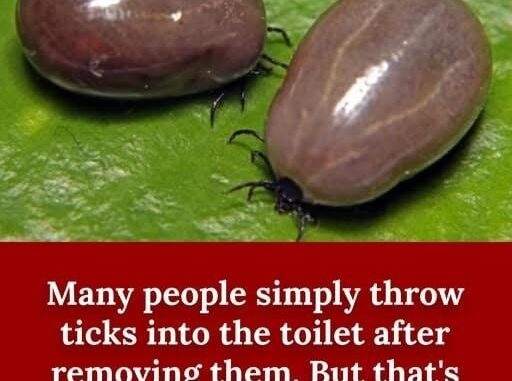
Ticks are small arachnids that feed on the blood of mammals, birds, and sometimes reptiles and amphibians. While they may seem harmless, ticks can carry diseases that can be transmitted to humans through their bites. Proper removal and disposal of ticks are essential to reduce the risk of contracting tick-borne illnesses.

HOW TO REMOVE TIKS SAFELYTicks can be very dangerous for you and your pets, and it is important to remove them quickly and safely.
What Makes Ticks Dangerous?Ticks live mainly in forests, under leaves and on bushes. They are difficult to spot in the wild, or when they invade your body. At each stage of their life cycle (which can take up to 2 years), ticks need a new host to feed on. They lie in wait near convenient entrances, with their front legs spread out. When a person or animal touches a tick, it climbs up and finds somewhere to attach itself. Ticks feed by making an incision in the skin and inserting a feeding tube, often combined with a sticky cement-like substance that makes them difficult to remove. They then slowly suck the host\’s blood, and if the host has a disease, the tick also gets sick. Once they have fed, they are ready to move on to the next stage of their life and will carry that disease with them. This is why they can easily transmit Lyme disease and Powassan disease.
How to Remove Ticks SafelyMost ticks will not enter a host right away, but the best way to remove them is to prevent them from having the opportunity to stay on you or your pet for a long time. To safely remove and remove a tick, follow these steps:
Use fine-tipped tweezers to grasp the tick as close to the surface of the skin as possible.Pull upward with steady, slow pressure. Do not twist or jerk the tick; this can cause the tick\’s mouth and feeding tube to break off and remain in the skin. If they do break off, use tweezers to remove them. If you cannot remove the mouth easily with clean tweezers, leave it alone and let the skin heal.After removing a tick, thoroughly wash the bite area and your hands with alcohol or soap and water.
Never crush a tick with your fingers. Crushing a tick in your fingers can expose you to internal irritation.
Remove live ticks by placing them in alcohol, placing them in a sealed bag/container, wrapping them tightly with tape, or flushing them down the toilet.
Keep Ticks Out of Your YardYour yard should be a place for your children and pets to play, and removing ticks helps ensure that it is a safe place. Here are steps to keep ticks out:
Remove leaf litter.Clear tall grass and rakes around the house and at the edges of your lawn.Put a 3-foot barrier of wood chips or gravel between lawns and wooded areas to limit the movement of ticks into recreational areas.Mow your lawn regularly.Stow wood neatly and in a dry area (This does not work on mice that carry ticks).Get help. Call PCS at 1900 8689 – 0386 808 999 today to keep your yard tick-free.If you have any questions about insects, please contact PCS using the form below for answers!